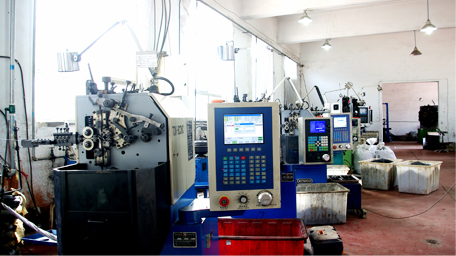
- Mobile Phone
- +8613931874955
- sales@cntcmetal.com
Exploring Various Types of Field Fencing Options for Your Agricultural Needs
Different Types of Field Fences
Field fencing is an essential aspect of agricultural and rural landscapes, serving various purposes from keeping livestock contained to securing crops from wildlife. Choosing the right type of fence is crucial for landowners, as each type serves different needs based on the terrain, type of animals, and the level of security required. In this article, we will explore the different types of field fences commonly used, their characteristics, benefits, and best applications.
1. Barbed Wire Fencing
Barbed wire fencing is one of the most traditional and widely used types of field fencing. Comprising several strands of wire with sharp barbs at intervals, it is effective in containing livestock such as cattle and sheep. The primary advantages of barbed wire are its durability and low cost. It is relatively easy to install and can cover large areas without the need for a significant investment in materials. However, the sharp barbs can pose a risk to animals and humans alike, making it less ideal for farms with small children or more delicate animals.
Welded wire fencing consists of steel wire strands that are welded together to form a grid-like structure. This type of fencing is much stronger than barbed wire and is often used for containing smaller animals like goats or chickens. Welded wire fences provide a higher level of security due to their sturdy construction, and they can also prevent small animals from escaping or predators from entering. While they may be more expensive to install than barbed wire, their longevity and effectiveness often justify the initial investment.
3. Electric Fencing
different types of field fence

Electric fencing is a modern solution that uses a high-voltage current to deter animals from crossing boundaries. It is particularly effective for livestock management, as it can be adjusted to accommodate different animal sizes and temperaments. One of the main benefits of electric fencing is its ability to create psychological barriers; animals learn to avoid the area because of the unpleasant jolt. Additionally, electric fencing requires fewer physical materials, making it a cost-effective option over time. However, it does require a power source and may not be suitable for every environment, particularly areas prone to power outages.
4. Vinyl or Plastic Fencing
Vinyl or plastic fencing is becoming increasingly popular due to its aesthetic appeal and low maintenance needs. Available in various designs and colors, this type of fencing can enhance the visual appeal of a property while effectively keeping animals contained. While it may not be as strong as steel options, modern advancements have resulted in vinyl fences that are durable and resistant to weather conditions. Such fences are particularly suitable for residential properties or areas where appearance is a priority, though they can be more expensive than traditional fencing materials.
5. Wood Fencing
Wood fencing provides a classic look and can be very effective for containing livestock, especially when constructed as a solid barrier. Different styles, such as post-and-rail, picket, or stockade, offer various levels of security and visibility. Wood fencing is also generally more environmentally friendly than metal alternatives. However, it requires regular maintenance, including painting or staining to prevent rot and extending its lifespan. Furthermore, wood fencing may not hold up as well in harsh weather conditions compared to metal varieties.
Conclusion
In conclusion, the choice of field fence significantly impacts agricultural productivity and property security. Factors such as the type of livestock, terrain, budget, and aesthetic preferences play a crucial role in determining the most suitable fencing solution. From traditional barbed wire to modern electric options, there is a range of choices available to meet diverse needs. Understanding the pros and cons of each type will enable landowners to make informed decisions that align with their unique requirements.
share:
-
Why Sacrificial Formwork Is Redefining Underground ConstructionNewsJun.06,2025
-
The Structural Dynamics of Modern Concrete: How Snake Spacers Revolutionize Flexible ReinforcementNewsJun.06,2025
-
Snake Spacers Smart-Lock Concrete Reinforcement with Surgical PrecisionNewsJun.06,2025
-
Snake Spacers: Reinforcement Precision for Modern Concrete ProjectsNewsJun.06,2025
-
Snake Spacers Powering Concrete's Structural DNANewsJun.06,2025
-
Slither into Success: Snake Spacers' Precision Bite for Unbreakable ReinforcementNewsJun.06,2025
-
Sacrificial Formwork: Building Stronger, Faster, and Safer StructuresNewsJun.06,2025



















